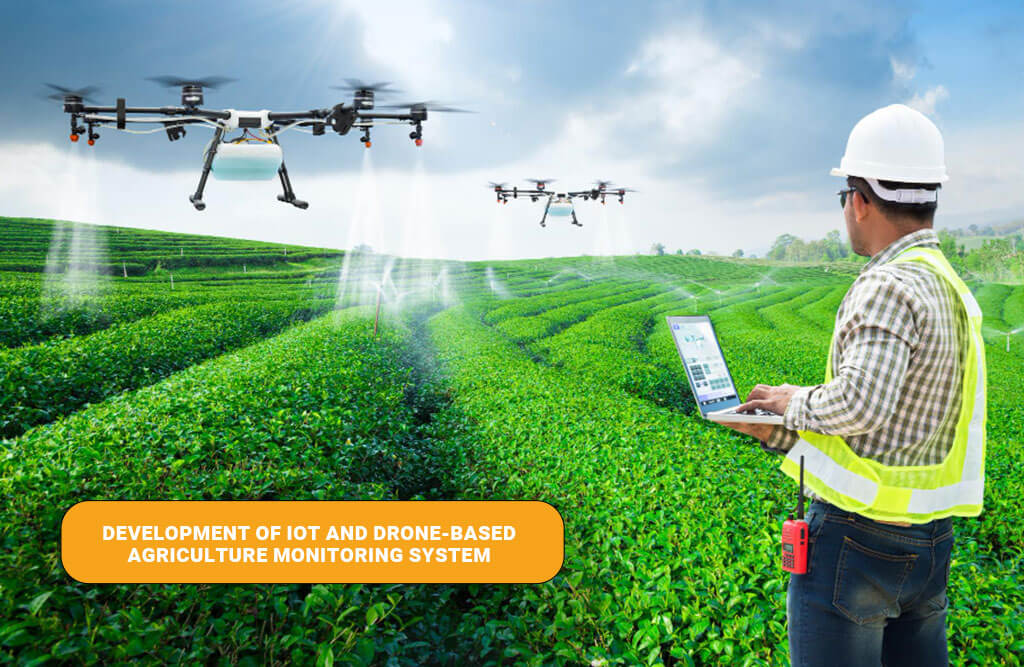
Agriculture in India is one of the strongest contributors to the economy and is significant to meet the vast demand of billions. The vast cultivation and it’s rapid transformation in increasing production led by rampant use of pesticides and chemical fertilizers is impacting both the soil quality and depleting water resources. The agriculture sector with it’s rising demand on food has it’s on challenges that are raised through consistent weather changes resulting to vast arid lands reducing resources resulting to low soil fertility and high demand on water.
A new revolution in the Indian horizon is in the making which will usher into a new era of agriculture revolution. This would be led by sensor devices, and its usage and application will create a new smart farmer.
Smart Farming through IOT and it’s Potential in India: It is estimated that the food waste in India due to harvest lost is nearly 92000 Thousand Crores, and it is increasingly getting to because of concern for Indian agriculture policymakers. The increasing consumption need of Indian population in the next 10 years is likely to increase more than 30-40 percent and there for controlling produce losses through cutting edge technology will drive change. The global sensor market has shown a positive curve upword largely driven by rising demand for smart green houses live stock monitoring and fish forming monitoring. The market size globally is pegged that 1.5 billion USD and is likely to grow to approximate 3.90 billion USD by 2030 at a growth rate of nearly 9.80 percent. In India, the impact of this shall be visible in a sector that contributes nearly 13 percent to the Indian GDP, and it’s 300 Million Farmers.
What are Smart Sensors and how do they work: Sensor devices can create an ease in farming and have the potential to collect real time data and bring a new agriculture revolution in the country these devices are transforming the management of crops through actionable data that can lead to increasing from produce.
1. Weather Stations : Real time weather data to specific agricultural fields can be provided to various sensors. Such weather stations can help monitor real-time weather temperature humidity and other actionable information. Farmers can use that data to make decisions based on scientific analysis leading to crop planting pest management and irrigation. Weather prediction help farmer to respond quickly and take corrective measures and improve response time to prevent crop damages.
2. Soil Moisture Sensors : By monitoring moisture in soil, the sensors measure the water content, in the basis of which farmers can gain valuable information in scheduling their irrigation of the crops. Over watering can be avoided, and significant water conservation can be created, improving crop health with positive impact on production.
3. Hyperspectral and Multispectral Sensors : These sensors allow farmers to have better knowledge and more efficient control on there crop under cultivation. The sensors can analyze sudden change in plant health caused by pests water induced stress and deficiency in plant nutrient.
Future with Sensors : The compactness and the cost-effectiveness of modern sensors and if once subsidised in make in Indian model shall provide better access to farmers with better affordability. With increased usage of data through analytics and AI some real actionable insights shall be made available for the benefit a farming community, this will herald a new tech driven green revolution that has potential to change the face of Indian agriculture and impact the life of Indian farmers.
Government Support and Policy Impetus : In recent years, the Indian government has been actively promoting the adoption of precision agriculture technologies, including agricultural sensors, through various initiatives and policies, which can further drive their uptake and benefits. It is important to note that the adoption of agricultural sensors also comes with challenges, such as the need for appropriate technical knowledge, reliable internet connectivity, and initial investment costs. However, as technology evolves and becomes more widespread, these barriers are expected to reduce, making the use of agricultural sensors an increasingly viable and beneficial option for Indian farmers.